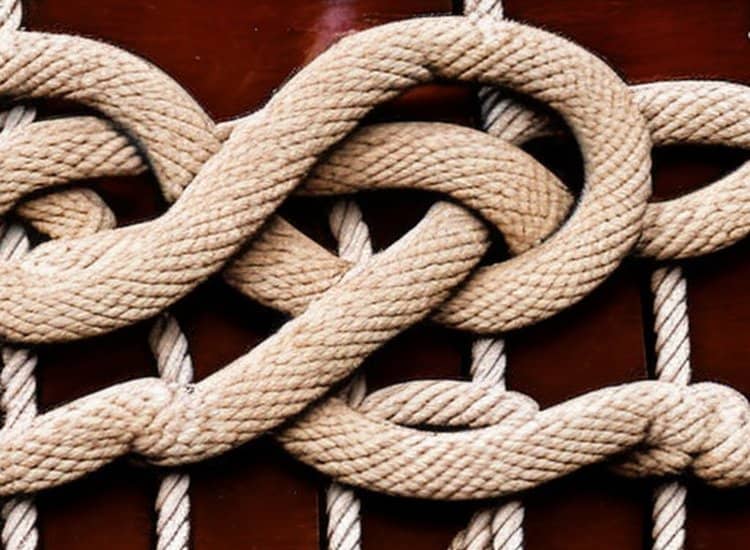In the vast world of maritime navigation, there are elements that have proven to be absolutely indispensable. Among them, one of the most significant are the sailor knots. The ability to efficiently tie and untie various types of knots is essential and, indeed, can make the difference between safe navigation and a maritime disaster. In this article, we are going to dive into the details of the five basic sailor knots that every navigator, whether a beginner or a veteran, should know and master.
1. Square or Reef Knot
The square knot, also known as the reef knot, is one of the pillars of navigation. Its popularity is no surprise, considering its simplicity and effectiveness. This knot is mainly used to join two ropes of the same thickness. The security it provides and its ability to be easily undone, even after having withstood a lot of tension, makes it a versatile and reliable option. From securing loads to improvising repairs, the square knot is, without a doubt, an invaluable tool at sea.
2. Clove Hitch
The clove hitch is another fundamental in navigation. This knot’s main function is to securely fasten a rope to an object, such as a post or a ring. Despite its apparent simplicity, this knot is surprisingly resistant and secure, capable of withstanding great tensions without coming undone. It becomes an essential ally when a firm and secure hold is needed, such as when mooring a vessel at a dock.
3. Figure-Eight Knot
The figure-eight knot is perhaps one of the most easily identifiable knots, thanks to its distinctive shape. Its main function is to act as a stopper at the end of a rope to prevent it from sliding through a ring or shackle. This knot may seem basic, but its importance should not be underestimated. Knowing and being able to perform a figure-eight knot correctly and efficiently is crucial for any navigator.
4. Bowline
The bowline is a knot that stands out for its strength and reliability. This knot is used to create a loop that does not tighten under tension, making it ideal for rescue or salvage situations. This knot is one of the most robust and secure in navigation, which explains its frequent use in critical situations.
5. Sheet Bend
The sheet bend is a particularly versatile knot. This knot is commonly used to join two ropes of different thickness or material. Its unique design allows it to do this effectively, making it an invaluable tool in emergency situations. Despite its simplicity, the sheet bend is highly valued for its strength and reliability.
Diving Deeper into Each Knot
Mastering these knots is not achieved by just knowing their structure, but by practicing them over and over again. It is practice that leads to perfection. Below, we will detail each of these knots so you can practice and master them.
The Square Knot
The square knot begins by crossing the right end of the rope over the left, then passing it underneath and pulling it upwards. Then the process is repeated but starting with the left rope. In the end, a flat and symmetrical knot should be obtained.
The Clove Hitch
The clove hitch starts with a loop around the object to which the rope is to be fastened. Then, a turn is made around the main rope, and after that, another turn is made but passing the end of the rope underneath. In the end, the rope is pulled to adjust the knot.
The Figure-Eight Knot
The figure-eight knot is made by turning the rope over itself and then passing the end through the loop formed. In the end, the rope is pulled to adjust the knot.
The Bowline
The bowline begins by making a loop with the rope over itself. Then, a second loop is made parallel to the first, passing the end of the rope underneath and then through the loop formed. In the end, the rope is pulled to adjust the knot.
The Sheet Bend
The sheet bend begins by making a loop in the thicker rope. Then, the thinner rope is passed through the loop, a turn is made around the thicker rope, and finally, the end of the thinner rope is passed through the loop formed. In the end, both ropes are pulled to adjust the knot
